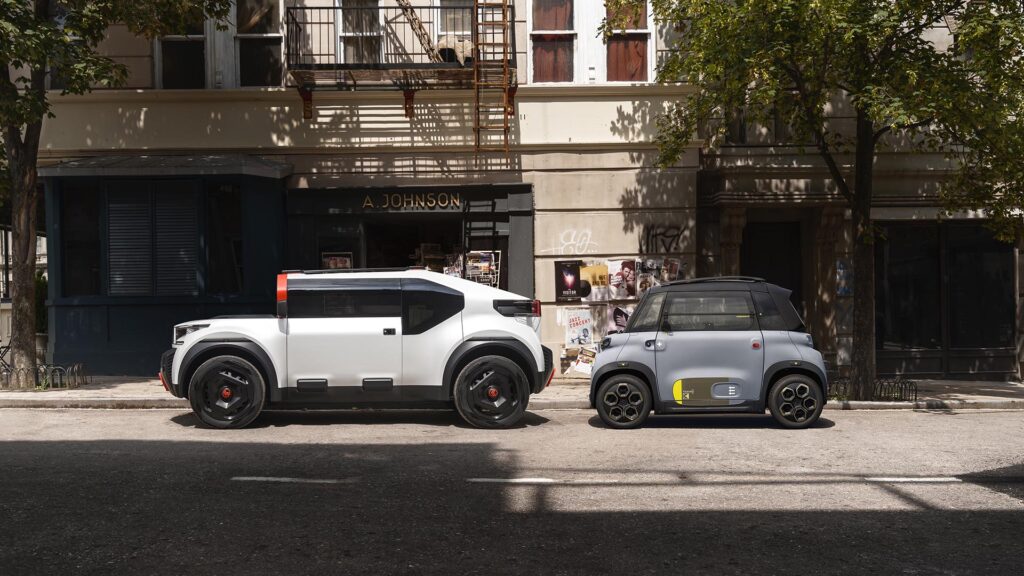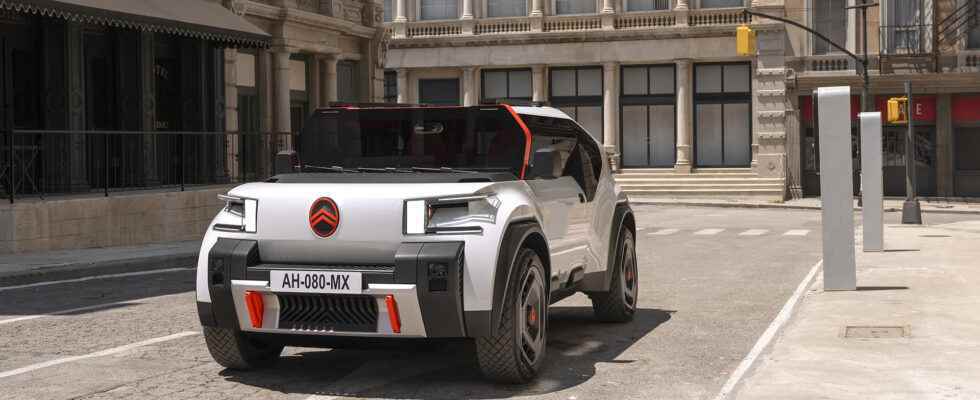Citroën decides once again to surprise with its new Oli concept. Behind this unexpected shape also hides several thoughts about future models.
Citroën is unveiling a new concept car on September 29, 2022. This Citroën Oli reminds us of the stunt of the Ami One concept, which later became Citroën Ami. This Oli concept is not just a reflection on the aesthetics of the brand’s next electric vehicles. It’s also a manifesto on the whole issue of a vehicle’s life cycle and how to keep cars affordable.
An ode to recycled and recyclable materials
The life cycle of vehicles is becoming the new obsession of car manufacturers. A reflection that we already found recently with the Dacia Manifesto concept. The automotive industry must reinvent itself to integrate more and more recycled and recyclable materials.
For this Citroën Oli concept, Citroën has played on several levers to achieve its objective:
- Reduce the number of parts needed to build the vehicle
- Find lighter materials, but just as resistant and durable,
- Incorporate more second-life materials.
Citroën takes the example of the seats of its concept. The brand says it uses 80% fewer parts than on a traditional seat. The seat mesh is made from recycled materials: “ Everyone wins: the seats are responsible and durable, the weight of the vehicle is reduced and the comfort of the occupants is improved thanks to better distribution of light in the passenger compartment in addition to seating comfort. »
Even the roof, the hood, the trunk bed are covered with recycled corrugated cardboard. Cardboard yet more resistant and lighter than steel, since it is reinforced by its honeycomb structure, supplemented by fiberglass and resin. An adult can climb onto the roof or hood without damaging the vehicle. As for the rest of the body, it is mostly in a plastic supposed to be easy to recycle.
Even the tires developed by Goodyear are made almost entirely of renewable materials.
A design at odds with what the automobile is today
The Oli concept inaugurates the brand’s new logo. Finally, we should rather say the new old logo. Since this new version of the Citroën logo is inspired by the brand’s emblem from 1919.
The design team seems to have had carte blanche to come up with some perfectly confusing aesthetic elements. Apparently, the big trend is cubic shapes on wheels at the French manufacturer. Defining this concept is on the other hand a little more full-bodied. Half-SUV, half-inverted Pickup, the Citroën Oli is both designed for the city and for families, which was not the case with its thinking around the Ami.

Once again, Citroën is having fun blurring the tracks when it comes to distinguishing the front from the rear of the vehicle. If it is unlikely that such a machine will actually reach our roads, several elements such as the headlights could integrate the brand’s next creations.
We are still cautious about the glass surfaces of the vehicle. Whether we observe the windshield, very vertical, with its three wipers or the semi-fixed windows inspired by the AMI, Citroën Oli seems to have gone a bit far.
Several ingenious ideas, on the other hand, are hidden inside Citroën Oli. We find once again the spirit of the Ami with a very simple space and removable elements, such as the audio system. To create an affordable vehicle, manufacturers must purify the interiors and find new alternatives to one-upmanship of screens, in any case, this is Citroën’s vision in this area.

Lightness for more efficiency
If the question of materials aims to promise a fully recyclable vehicle, the design of the machine is also based on an objective of reduced consumption. This efficiency does not go a priori through the aerodynamics of the design, but through its featherweight for a 4.2 m electric vehicle.
Three numbers to remember:
- 1000kg
- 400 km range
- 10kWh/100km
On the other hand, to achieve this objective, the vehicle is limited to a maximum of 110 km/h. But for a machine with dubious aerodynamics, compared to the Mercedes EQXX, it’s a more than honorable result. The idea is to offer a vehicle that allows you to go from point A to point B, a “move” like the Citroën Ami can be, but aimed at families.
Not everything is to be thrown away, or recycled, on this Citroën concept. Whether you like its design or not, there are a few ideas to keep and develop for future production models.
